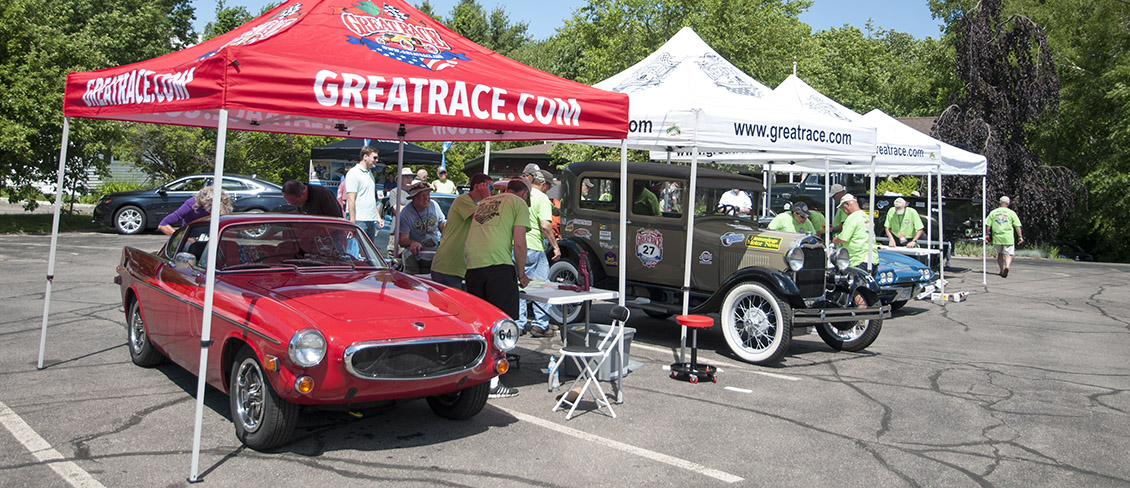

The Great Race has announced the 2018 Event Regulations are posted and available for viewing on the website. There are no major changes again this year to the rules, but each contestant is responsible for reading and understanding the regulations. Obvious changes are the dates of the event and the promoted city stops, beginning with the start in Buffalo, New York on Saturday, June 23, and ending with the finish in Halifax, Nova Scotia on Sunday, July 1.
There are two regulations highlighted, and they are both in Section II. H. Equipment with numbers 2 and 4. They are:
(2) Wristwatches: In addition, the driver and navigator may each wear one approved analog wristwatch without stopwatch function. A digital wristwatch is prohibited.
(4) Any clock or watch that is self-correcting or self-synchronizing by using radio, cellular, or satellite/GPS technology is prohibited.
Participants may review the regulations by clicking this link:
https://www.greatrace.com/wp-content/uploads/2017/11/Event-regulations-GAR2018.pdf
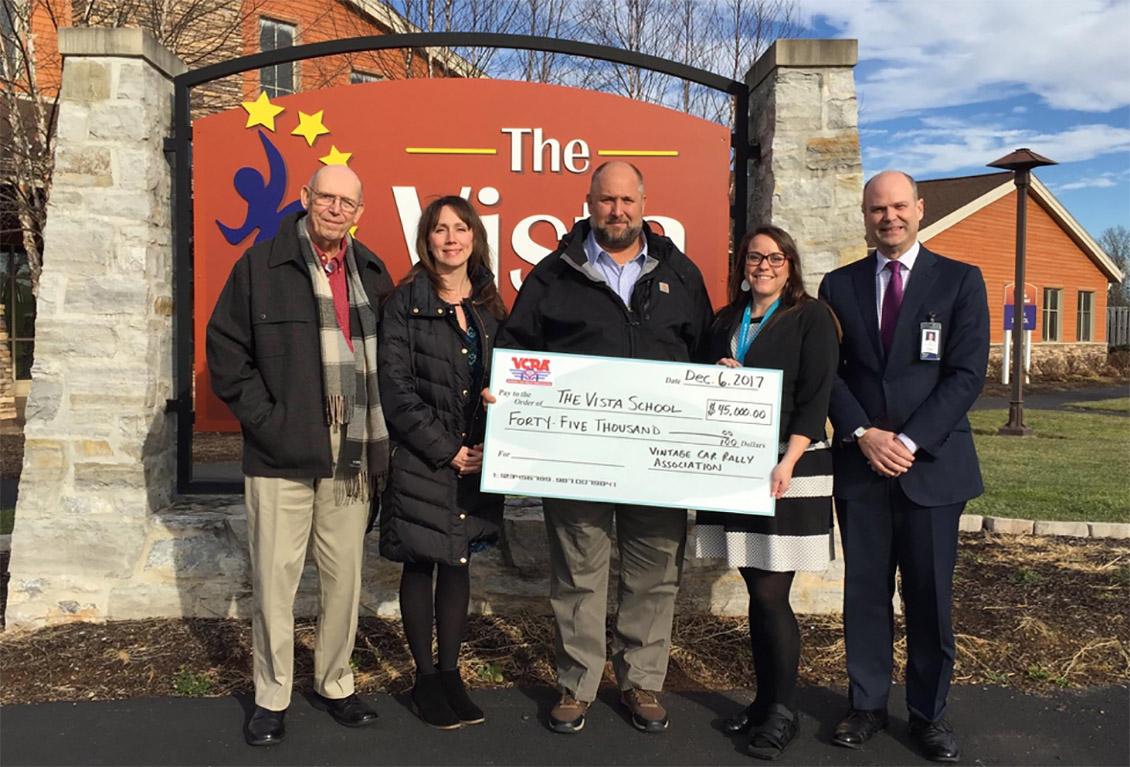

For over the last 10 years Edward and Steven Tourje from Uniondale, Pennsylvania have been racing their 1939 Ford One mile at a time for Autism. On Wednesday December 6th 2017 they represented the Vintage Car Rally Association (VCRA) by presenting The Vista School with a holiday gift, a $45,000 donation to purchase a slightly used van and soundproof classroom dividers. This amazing gift will enable students with autism to get into the community for job training and employment, and create quiet spaces within classrooms. Pictured, from left, are Ed Tourje, VCRA representative; Kirsten Yurich, Chief Clinical Officer; Steven Tourje, VCRA representative; Candis Chubb, education director; and Michael Jarman, chief strategic officer. We’re grateful beyond words!
For more information about VCRA and Racing for Autism visit www.vintagecarrally.com
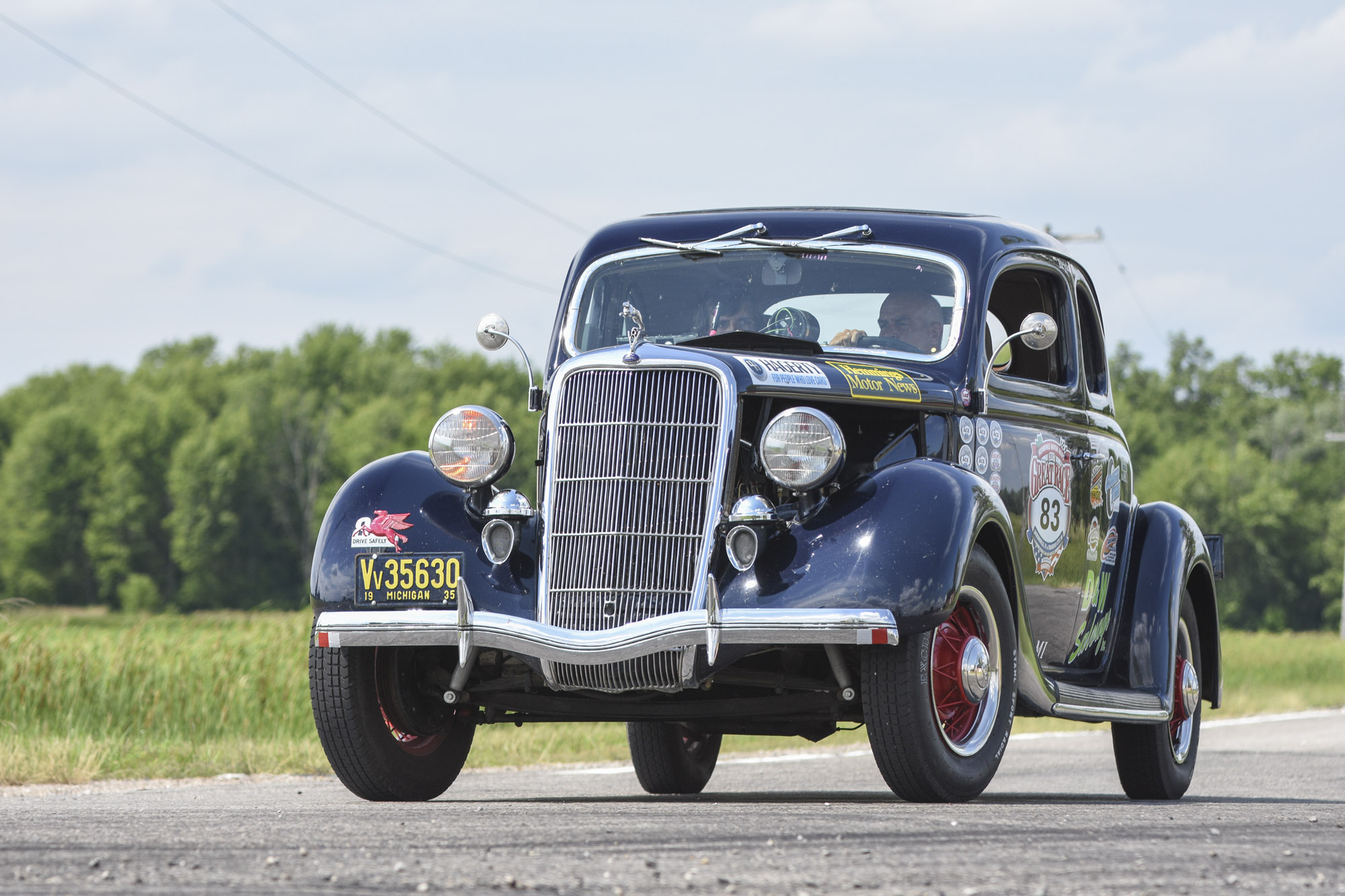
The 2017 Great Race television show has aired on Velocity, but if you missed it or forgot to record it you dont need to worry because it has been posted on the Great Races YouTube channel. The TV show highlights most all of the vehicles, including of course the winners Beth Gentry and Jody Knowles and their 1932 Ford Cabriolet. It also features the winners of each division and all of the beautiful scenery from Florida to Michigan that we saw on the event. You can watch the video here or by going to Great Race TV at https://www.youtube.com/user/GreatRaceTV
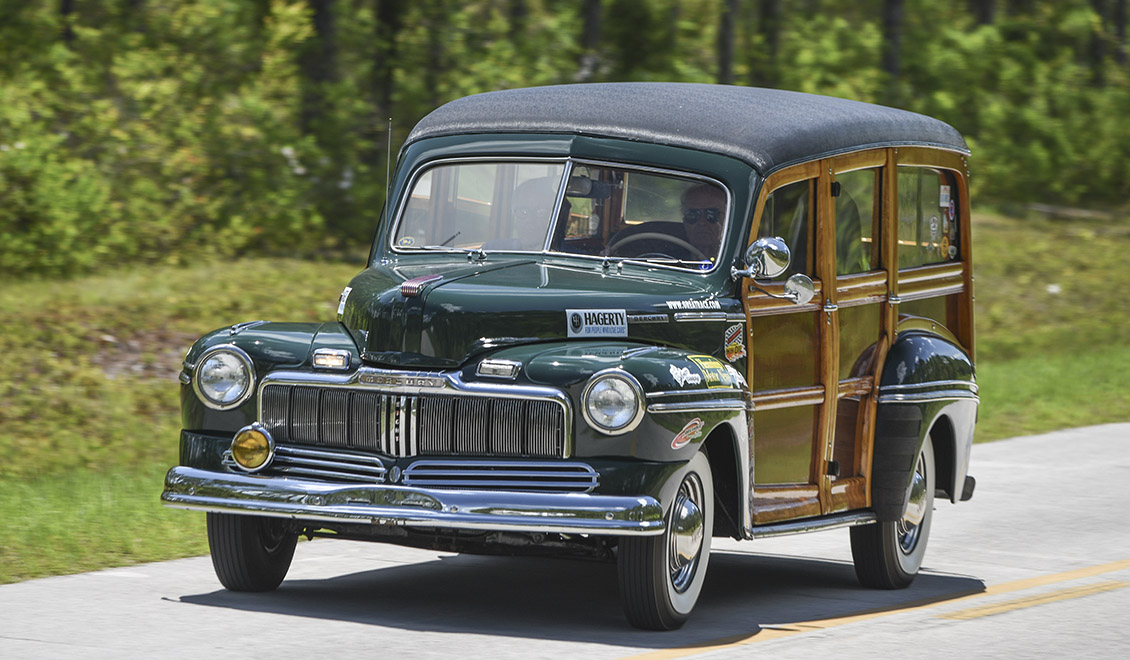

Dozens of rookies get to experience the Great Race every year, as Dave Burrows did in 2017. And Dave did it right from the start to the finish. He bought and restored a 1948 Mercury woody wagon for the event, and he documented every step of the way from buying the car to crossing the finish line in Traverse City. We thought you would enjoy reading about his adventure.
The Great Race of 2017 by Dave Burrows
Growing up in Michigan
Since an early age, I was fascinated with cars. I bought my first car at age 16 with a friend who was also under age. We had to sell it as our fathers got together and neither one would insure the other boy on his policy — smart men! I had several interesting cars before I got married; 1954 Ford convertible, 1957 Chevrolet convertible and a 1956 Jaguar 140 MC. Then marriage and five wonderful children–a 1955 Ford and various company supplied boring 4-door sedans.
The British invasion
While assigned to Chicago in 1969, I bought a rough 1964 MGB Roadster to keep me busy. It did, and with a factory manual I became a dangerous mechanic once I figured which end of the spark plug went into the hole. A business transfer to Milwaukee followed where I joined the Great Lakes Sport Car Club. The members were heavily involved with road racing sanctioned by the Midwest Sports Car Council. I raced with them at Blackhawk Farms in Illinois and the Sports Car Club of America at the midwest and eastern road courses. I became proficient at maintaining my race cars, including engine rebuilding. The cars raced were two MGBs (one by Huffaker), three Triumph Spitfires (two by Group 44) and a split window Corvette by Kaplan Engineering. While racing from 1971 to 1988 and 2001 to 2006, I restored other British cars to help pay for my racing expenses. They were MG, Triumph and Morgan cars.
Flatheads
I never lost my desire to own a flathead with dual Smitties. I had flathead Fords on my radar. After retiring I moved back to Michigan in 2011. That summer I attended a car show in Traverse City and saw Mike Nickels 1934 Ford Woodie and later went to his shop. Mike restores and manufactures wood for all car makes and models for customers all over the globe. Woodiewhat a way to get a flathead and a beautiful carI told mike I wanted to have one. He showed me some back issues of The Woodie Times classifieds and suggested that I take out a subscription, which I did. I asked him to put me into his schedule, which stretches out very far.
The Chase
After some months of looking, a 1948 Mercury looked promising but was too far away — Little Rock. In the spring of 2013 I had a trip planned to deliver my 1967 MGB to one of my daughters in Houston. The route from Michigan to Houston went through Little Rock — imagine that! And the Merc was still available. I discussed the car with Mike and he told me what to look for and what questions to ask. At Easter time I loaded up the MGB on a trailer and drove to Little Rock to look at the Merc. After discussing the Woodie on the phone with Mike, I completed the purchase and left the car there for my return trip from Houston. I delivered the MG, spent Easter with my four daughters and then returned to pick up the Merc. I bought a middle seat from the sellers friend, loaded up the spares and continued to Traverse City. I left the Merc and trailer with Mike. We used the trailer to store the chrome which had been restored and also the parts we removed for the restoration. I lived one hour away so I drove to the shop several days a week to work on the car.
The Restoration
I asked for a #2 job as I once did a #1 job on a MGA twin cam. The MGA was so nice that I was afraid to drive it. It didnt take long to find a new owner. Mike has a group of guys who hang around the shop and like to work on his projects. Thanks to them the restoration got started right away. Especially helpful were: Mark, Bud, Tom and two other Mikes. Prior to taking the car to the sand blaster, we removed all the wood, the engine and trannie and cleared out the engine compartment. The car interior was also cleared out except the windshield; the hood and fenders were removed. The car slipped half way off the open trailer on the way to the sand blast shop. Several guys at the intersection helped us reload the car. Wow! That could have been a disaster. We picked up the car the next day and were more careful with the tie downs.
Mark primed it immediately as the surface was turning to rust already. Mike made a completely new top and several pieces that were beyond repair. He did the wood work, Mark the painting while the rest of us did the mechanical restoration. Mark found only three small spots of rust; all on the floor. The pieces that he replaced measure about 6x12 altogether. We replaced the Pete and Mikes dropped front axle, the floor shift transmission and the wide rear wheels from Mikes bone yard. Mikes brother made the rear seat. I moved to Saint Augustine, FL that fall, 2013. Mike and Bud worked on the Merc and other cars during the winter. I returned in the spring to help finish the car. We were scheduled to go to the Early Ford V-8 Eastern National Meet in late June of 2014. We trailered the car to the meet in Gettysburg, PA. It looked great and ran pretty good for its first outing.
I trailered the Woodie to my St Augustine home in the fall and continued to tweak the running performance. A good friend had been an A/C contractor in NY before moving here. We installed A/C. Its a must in Florida. The car wasnt running up to its potential. I diagnosed it as a fuel problem. I rebuilt the carb, fuel pump, tried new jets, replaced the fuel lines and gas tank; it wasnt a fuel problem. All the work took me into the summer of 2016.
The Merc had been accepted into The Great Race which started in June 2017. The clock was ticking. My neighbor Dudley new grew up with flatheads and was very helpful during the fine tuning phase. We talked to many flathead engine experts. Jim Weiss and Bob Beach from The Ancient City Automobile Club were also tremendously helpful.
The only remaining solution was timing. The distributor had been rebuilt prior to installing it in Traverse City, which is the reason we didnt look at it and also due to the impossible location on the engine. When we pulled the distributor out, we measured the point gaps. One side was .006 and the other was .000. Since Im aiming for convenience and ease of adjustment, I converted to a 1949 Ford distributor with the ignitor electronic ignition. This involved several modifications to get the engine belts forward and out of the way of the top mounted 1949 distributor. Modifications involved: water pumps, front timing cover, crank spacer and a hose from the oil filter canister to the front cover. I completed this about 90 days prior to The Great Race.
In addition to many local runs my crew (Suzanne) and I made several long trips. One was to the Sunnyland Antique Boat Festival at Mt Dora, FL. It was a 300 mile trip and everything worked fine.
The Great Race
The Great Race is a time/speed/distance rally, unlike the Cannonball Run. It is a rally for pre-1972 vehicles. The winner will be within seconds-plus or minus-of the computed base time and totaled over the nine day event. The days are broken into legs which are up to 7 legs per day. Thus a perfect day will be 7 legs @ 0 for each leg = 0. This equates to 7 aces. Ace decals are proudly shown on the vehicles. All vehicles have a time modification %–the older the car, the more allowance. (Taken from Woodie Times, June 2017)
The oldest cars this year were a 1916 Pikes Peak Hill Climber, a 1916 Hudson Super Six, a 1916 Chevrolet Phaeton, a 1917 Peerless Speedster and a chain driven 1918 American LaFrance Speedster. The major sponsors are: Hemmings Motor News, Hagerty, Coker Tire and Reliable Carriers. The total entry was 120 pre-1972 vehicles. Total prize money was $150,000 with $50,000 awarded the grand champion. The previous 31 Great Race routes included The Eclipse at the White House, the Statue of Liberty Centennial Celebration, Disneyland, Disney World, Route 66, the Grand Canyon as well as stops in Canada and Mexico.
This year the race was 2300 miles along the Dixie Highwayfrom Jacksonville, FL to Traverse City, MI (my race was close to 2400 miles as we got lost once a day). Next years race will be from Buffalo, NY starting from the Pierce Arrow Museum and ending in Halifax, NS. Its already overscribed, so get your entry in for 2019. Teams and cars come from every corner of the United States (including one from Hawaii), seven teams from Japan, two from England and two from Canada.
Computers, calculators, lap tops, maps and Garmin/GPS are not allowed. The navigator receives the days course instructions a half hour before departure. Vehicles start and are supposed to end one minute apart. The navigator is allowed one stop watch. The electronic speedometer works on a magnetic pick up off the left front wheel. The speedometer and a clock are calibrated each morning. The factory supplied speedometer and odometer on the dash are covered.
Pre-Race Preparation
Besides greasing, oiling and fixing; I put out spares for almost anything that could go wrong: spare engine belts, hoses, light bulbs, distributor cap, filters for oil, gas and air, grease gun, carb, coil, electronic ignition, hand tools. Floor jack, two extra sets of gapped spark plugs, two cases of drinking waterand clothes for a month as I was staying in Northern Michigan after the race. After I loaded everything, the Woodie was sitting low on the springs. I began to unload, keeping only the bare essential items. Some of the teams had all of these items in their crew car. My navigator, Rick Grant, is from Dayton, OH. He had seen the Merc but had never been a passenger. I saved room for his suit case. That filled up the area that had been occupied by the third bench seat. I installed a clothes rod which helped. The crew, Rick and Suzanne, and I attended the pre-race instruction classes and actually did a warm-up trophy run. Jim Weiss and Bob Beach helped with the car and were on hand for the Saturday start.
The Race
Over the nine days and 2300 miles we had organized stops in 19 cities. Crowds lined the streets as we made our lunch and dinner stops. Each antique car is welcomed under the trestle with a flowery description of the car and team. Corky Coker who owns the great race was the M.C. at each of the two or three stops each day. It was great to see Wayne Carini there too, in an official capacity.
The local people at each city stop usually served the meals as well as handed out goodie bags. Its an instant festival. There was a great deal of enthusiasm from the crowds. Some asked for autographs in their official programs.
Day 1 – We started from Jacksonville on June 24 @ 10:30 am. The last car got off @ 12:30 pm remember 120 cars each a minute apart. That night we had an enthusiastic crowd in Tifton, GA. Rick and I got an ace. We thought it would be easy to get a lot more aces during the race. We were wrong as we got close only several times being 1 and 2 seconds off.
Day 2 – Sunday, June 25: lunch stop in Newman, GA, home of several great race teams. Pit stop: Armuchee, GA, where we viewed a private collection of Ford cars belonging to the great racer, Wayne Vick. Cars ranged from Model T trucks to As to flatheads. Overnight: Chattanooga, TN, hometown of the Great Race and sponsor Coker Tire. We dined in the hospitality area of the Coker Tire Museum. We enjoyed great barbeque and a tour of the vast and endless museum which showed car restorations from start to finishconsisting of cars, motor cycles and motor scooters.
Day 3 – Monday, June 26: lunch stop in Murfreesboro, TN at Cannonsburgh Village on an 1800s historical site. Overnight: Bowling Green, KY, hometown to the Corvette Assembly Plant and the National Corvette Museum. Best known as the hometown of Holley Carburetor, who sponsored the evening meal. Earlier during the day one of the competitors drove his car off the road into a deep ravine and landed on its side. The car was hauled out by a wrecker and was able to finish the entire race.
Day 4 – Tuesday, June 27: lunch stop at French Lick, IN, hometown of NBA great Larry Bird, the French Lick Resort and the French Lick Scenic Railway. Dinner stop in Franklin, IN. This is a beautiful small town with the usual restored courthouse in the central city square. We drove about 25 miles to overnight in Indianapolis.
Day 5 – Wednesday, June 28: lunch at Wapakoneta, OH, hometown of the first man to step foot on the moon, Neil Armstrong. We enjoyed lunch and a local car show. To Ricks surprise, a half dozen of his friends from Dayton made the 60 mile trip to surprise him. Overnight: Auburn, IN. In the early days of the automobile, it was Indiana not Michigan that led the way. There were more car companies in Indiana than any other, and no town was better known than Auburn for turning out those cars. The Auburn, Cord and Duesenberg were built there. We stopped at the ACD Automobile Museum. I had visited it 15-20 years earlier and was amazed at its growth; possibly 3- 4 times more cars and all beautifully restored. On the property is a new National Automotive and Truck Museum.
Day 6 – Thursday, June 29: pit stop at Shipshewana, IN. This small town has the most incredible collection of Hudson automobiles. Eldon Hostetler started the museum just several years ago. Lunch stop: Hickory Corners, MI, home of the Gilmore Car Museum. It is North Americas largest auto museum; almost 400 antique automobiles and motorcycles in a 190,000 square foot exhibit on a 90 acre historic campus. Special features include a 1930s Shell Gas Station and a 1941 Silk City Stainless Steel Diner. Gilmore has a youth program and they entered a car being driven and navigated by their students (X-Cup Class); overnight in Ypsilanti, MI, the town with the last Hudson dealership and home to Willow Run Airport. The airport was completed by Ford in 1941 for production of their B-24 bomber. Dinner was hosted by the Ypsilanti Automotive Heritage Museum.
Day 7 – Friday, June 30; the fourth of July holiday starts this day. Almost everyone in southern Michigan is driving on I-75 and is heading up north. We wove our way through the traffic over to Chesterfield, MI to Stahls Automotive Foundation Museum for a tour and magnificent lunch. The Stahl family entered two cars in the race. There are many gas pumps and all sorts of automotive signs. The automobiles are Duisenberg, Auburn, Packard, Stutz, Mercedes, Tucker and Marmon, just to name a few. All were beautifully restored. If you are traveling in southern Michigan, Stahls and Gilmore are must visits! Overnight in Frankenmuth, MI. This town has a strong German heritage and is structured to resemble Old Bavaria. The Christmas store is open 364 days a year and is the largest of its kind in the world. For dinner we received generous coupons valid at any of the restaurants.
Day 8 – Saturday, July 1; we had been running the A/C since day 1. It was getting cooler outside as we approached Alpena, MI which is on Lake Huron. We turned off the A/C, rolled down the windows and got some Lake Huron fresh air. Lunch was provided by the Alpena Yacht Club. After lunch we rejoined I-75 northbound to cross over the majestic Mackinaw Bridge which joins the Michigan lower and upper peninsulas. Our overnight was the Soaring Eagle Resort in Sault Saint Marie [known as the Soo]. As we approached the bridge, traffic was backed up approximately 50 minutes. Remember this is the Fourth of July weekend. As we expected, the last leg was aborted so we cruised into the Soo in a fast, easy fashion. After the downtown car show we drove to our hotel. Canada is on the other side of the Soo Boat Locks. A fireworks display from across the locks was visible after dark.
Day 9 – Sunday, July 2; we drove the Mackinaw Bridge again to finish the race early afternoon in Traverse City, MI. This crossing went without any delays. Traverse City is the hometown of Hagertyone, one of The Great Races major sponsors. Also my Woodie was restored there at Nickels Automotive Woodworking. Our arrival for the finish of the great race coincided with the National Cherry Festival. There were lots of people to greet us. Our other crew member, Suzanne, two friends from the Jacksonville MG Club, Geoffrey and Paula Ashcroft, Ricks wife and daughter, Chris Morley and Mike and Bud from the Woodie Shop were there and gave us a royal welcome.
The Thunderbirds gave an impressive air show. Hagerty provided lunch and they put their best foot forward for the awards banquet and award ceremony. Our finish was in the upper 2/3 bracket so we were not in the money. All competitors received an Olympic style medal which was inscribed to finish is to win.
Day 10 – Monday, July 3; coffee and good byes at the resort. The Hagerty Private Car Collection was open to all the race teams. I turned the Woodie over to Reliable Carriers, another major sponsor, for delivery to my home in St Augustine. I just wasnt ready for another 2300 mile trip! Off to Higgins Lake for relaxing and unwinding. Higgins is a beautiful spring fed lake located one hour east of Traverse City. Rick and his family left for Higgins on Sunday. Suzanne drove us to the lake after I completed my business with Reliable Carriers.
The Great Race was a wonderful experience and a must do for any vintage car person. We developed many friends, from here and abroad. Corky Coker and his team spend a lot of time and work to make things run smoothly. It takes hundreds of people and thousands of hours to guarantee that kind of success. I imagine that the 2018 Great Race plans are almost complete and that 2019 plans are in the works. Sign up now for 2019!
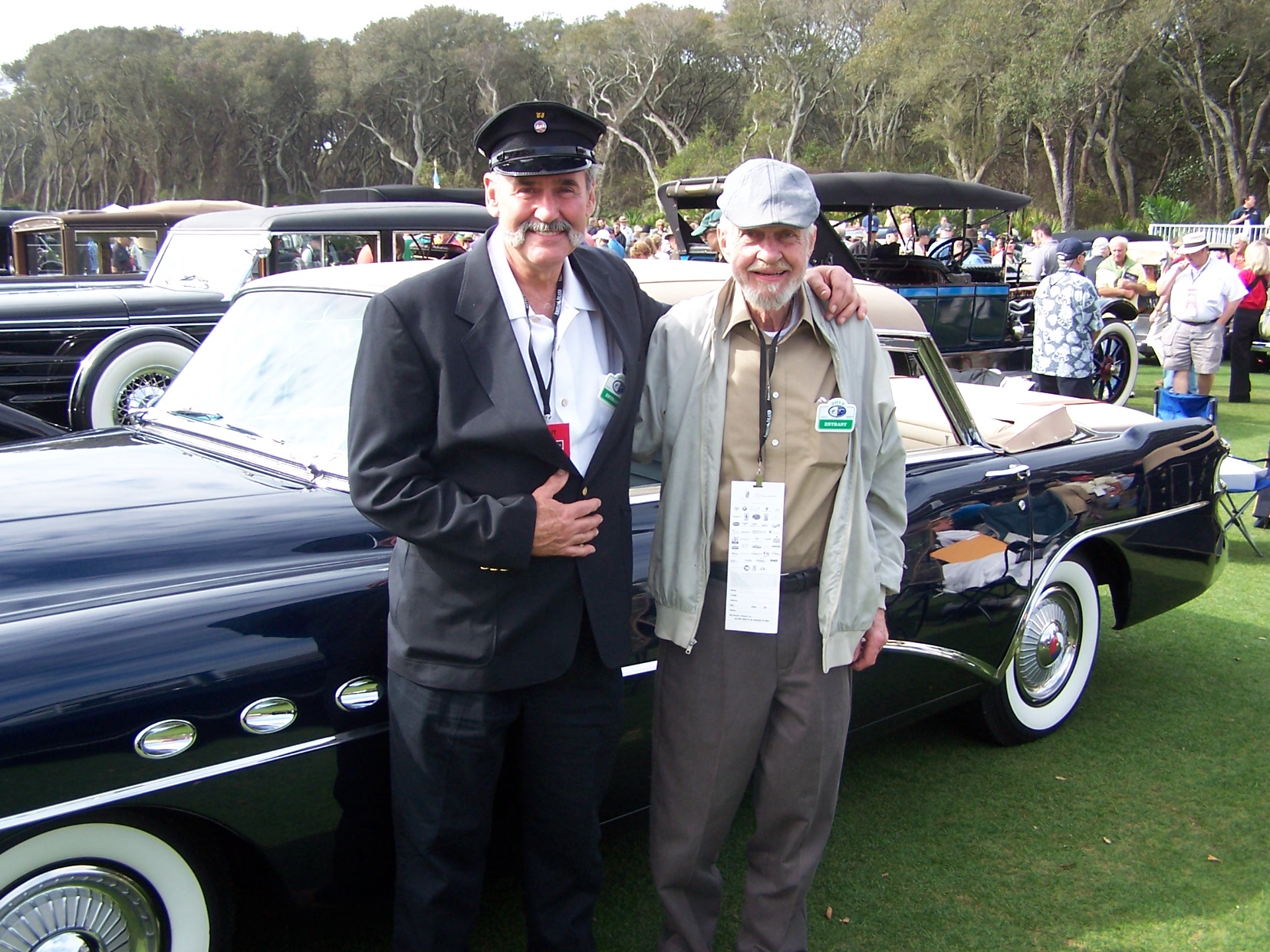
Frequent Great Racer Bob Coker passed away Nov. 9 at his home in North Carolina at the age of 82. Known affectionately as Uncle Bob around the Great Race and Coker Tire, Robert Edward Coker loved Buicks. He got his love for antique automobiles from his father, and through the years had owned some of the most unique makes of that marque, especially from the 1950s. Bob was the owner and caretaker of the 1954 Buick Landau concept car and the 1955 Buick Motorama car among others.
Bob could always be found at an AACA event like Hershey, at a Buick Club of America meet, on a car tour or participating in the Great Race. His last Great Race was in 2011 in his 1955 Buick station wagon. A lot of people had better scores on the Great Race than Bob Coker, but no one had more fun, Great Race director Jeff Stumb said. He was a true American, a veteran and quite a character.
Bobs brother Harold Coker started Coker Tire in 1958, and annual Coker Tire Challenge Spirit of the Event award is named in honor of his other brother Bill Coker.
Click the link below for Bobs obituary in the Winston-Salem Journal.
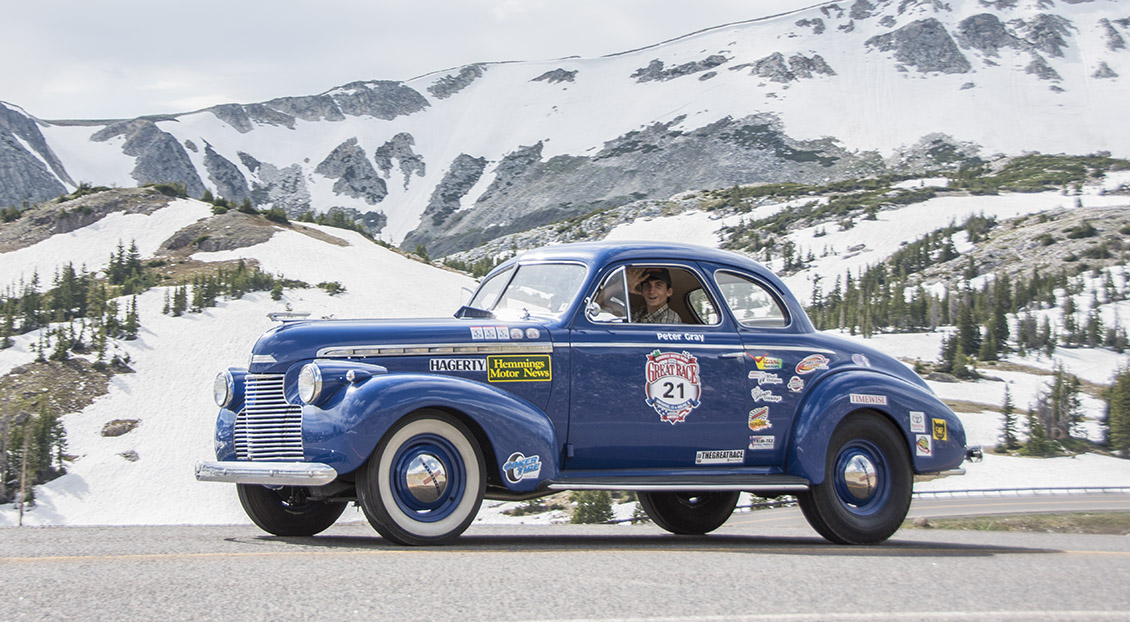

Tim and Peter Grey have been involved quietly with the Great Race for the last three years with their 1940 Chevrolet coupe, but those who have gotten to know them will not be surprised to hear with Tim did during the recent fires that ravaged northern California. The Greys are from Sonoma, which was in the center of the tragic events last month, and Tim was not going to let the fires consume his neighborhood without a fight.
Peter, who rallied for the first time in the 2015 Route 66 Great Race with his grandfather Jim Smith, was away at Purdue University in Indiana during the event. Peter and Tim rallied together in the Chevy in 2016 and 2017. With the rest of the family safe, Tim helped save his and several other neighborhoods from being engulfed in the inferno by staying behind and directing firefighters through the heat and smoke.
Read about the events and what local residents and firefighters had to say about Tim at this link to the Sonoma News:
http://www.sonomanews.com/news/7585536-181/how-tim-gray-helped-to
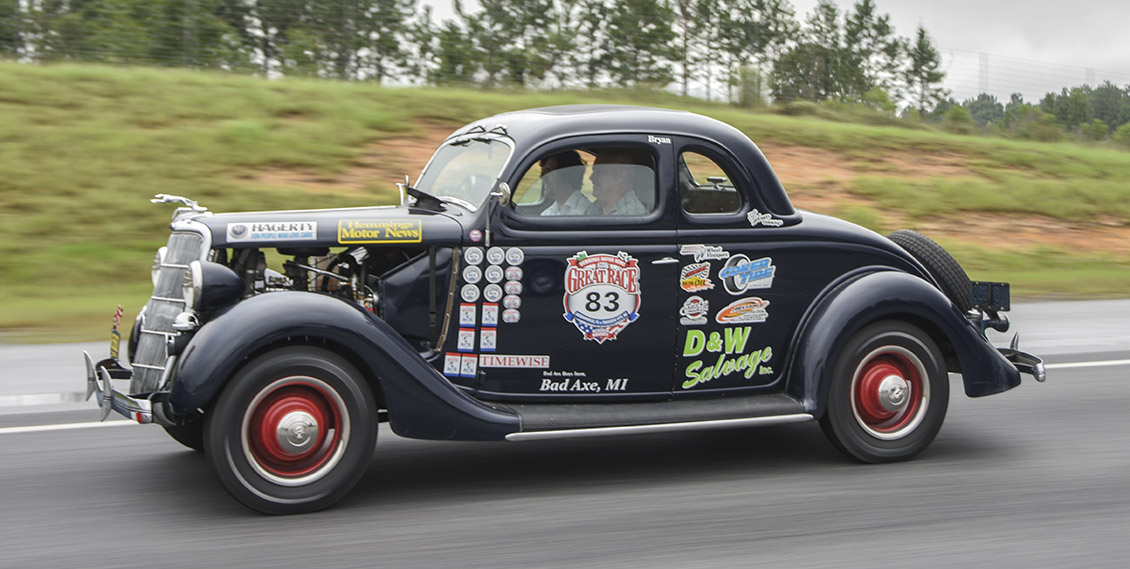

Bryan and Ian Deering won the annual Pumpkin Run in Millsboro, Delaware over the weekend in their 1935 Ford Coupe. The father and son team from Bad Axe, Michigan edged out New Yorks John and Scott Hudson in their 1940 Chevrolet Coupe. Third place went to the husband and wife team of Doug and Dana Sharp in their 1916 Hudson Pikes Peak Hillclimber. In all, the event helped raise $6,500 for the Millsboro Fire Company, $500 for the Millsboro Police Departments Needy Family Fund and $250 for the Millsboro Garden Club. The Pumpkin Run is part of the Northeast Rally Club and is headed up by longtime Great Racer Bob Bryan.
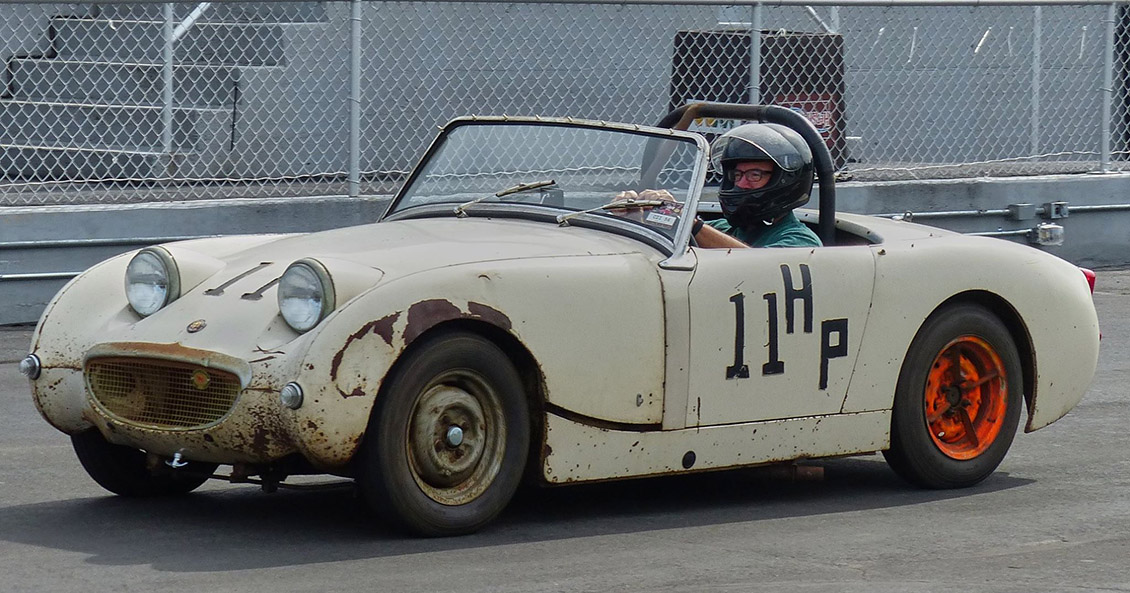

Tom Littrell of Galax, Virginia has been entering X-Cup teams for almost as many years as the division has been part of the Great Race. X-Cup is for high school and college age students and Littrell has been involved with Boy Scouts for decades as a leader and it just made sense that he would give those boys a chance to experience the Great Race. And after all those years he finally brought the X-Cup championship back to Galax for the first time this summer after winning the title at the finish in Traverse City, Michigan.
Littrell was in Hershey, Pennsylvania last week for the annual AACA Hershey Regions Eastern Fall Meet with something a little different than his purple Model A roadster he takes on the Great Race. It was a 1961 Austin Healey Bug Eye Sprite, and he participated in the race around the stadium track at the event. The car is just as he found it in a barn where it had been since 1967. Of course, he went through the engine, the brakes and other mechanical items, but he plans to leave the body exactly the way it is, including the taped numbers which are peeling off at the corners.
Wouldnt this make a fantastic Great Race car for 2018!
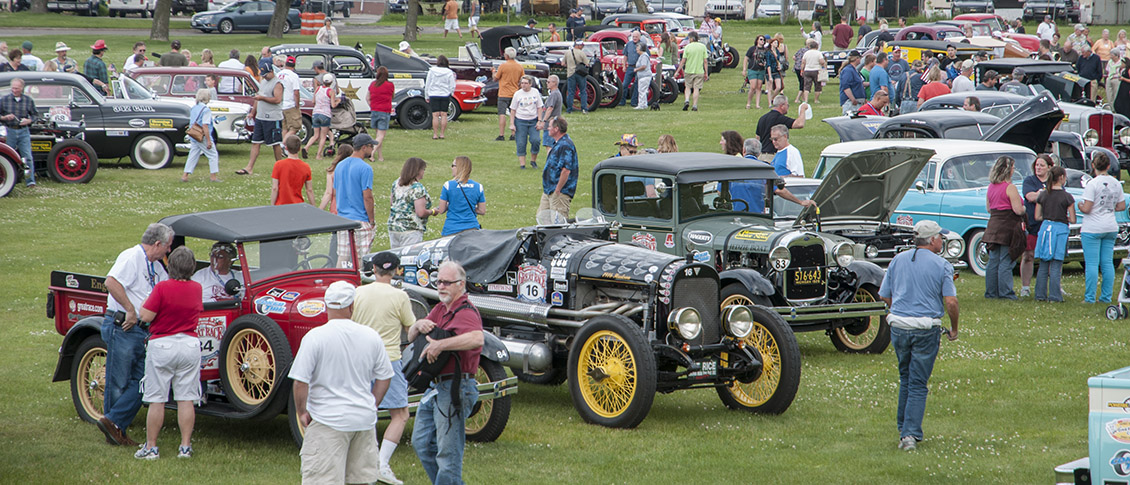

Cars on Kiawah is an annual celebration of the Lowcountry’s finest automobiles displayed in the lush setting of Ocean Park on Kiawah Island, SC. The 2018 Cars on Kiawah will take place on Saturday, April 21 from 10 a.m. – 3 p.m., with a display of over 200 of the regions top club and individual collector cars. The 3rd annual event will continue to showcase the history and evolution of the automobile with a special category dedicated to race cars including participants from Hemmings Motor News Great Race. The Lowcountry has had dirt tracks, drag strips and SCCA events and is home to quite a few former Great Race participants who want to share their story with our guests, remarked team member Irene Breland. Well also continue the popular Best Woman-Owned Car award and hope to see many more on the show field in 2018.
Once again, Charleston area food trucks will be on hand offering plenty of food and drink to participants and guests. Interesting displays and vendors will be setup around the park and our Master of Ceremonies will keep all entertained with stories from owners on the history of their cars. Exhibitors must register their automobiles in advance. For more information on the 2018 Cars on Kiawah, including registration, volunteer opportunities or other Kiawah Island Motoring Retreat events, visit www.carsonkiawah.com
Cars on Kiawah is hosted by the Kiawah Island Motoring Retreat, a 501(c)(3) nonprofit. An annual donation of event proceeds is made to the Barrier Island Free Medical Clinic.
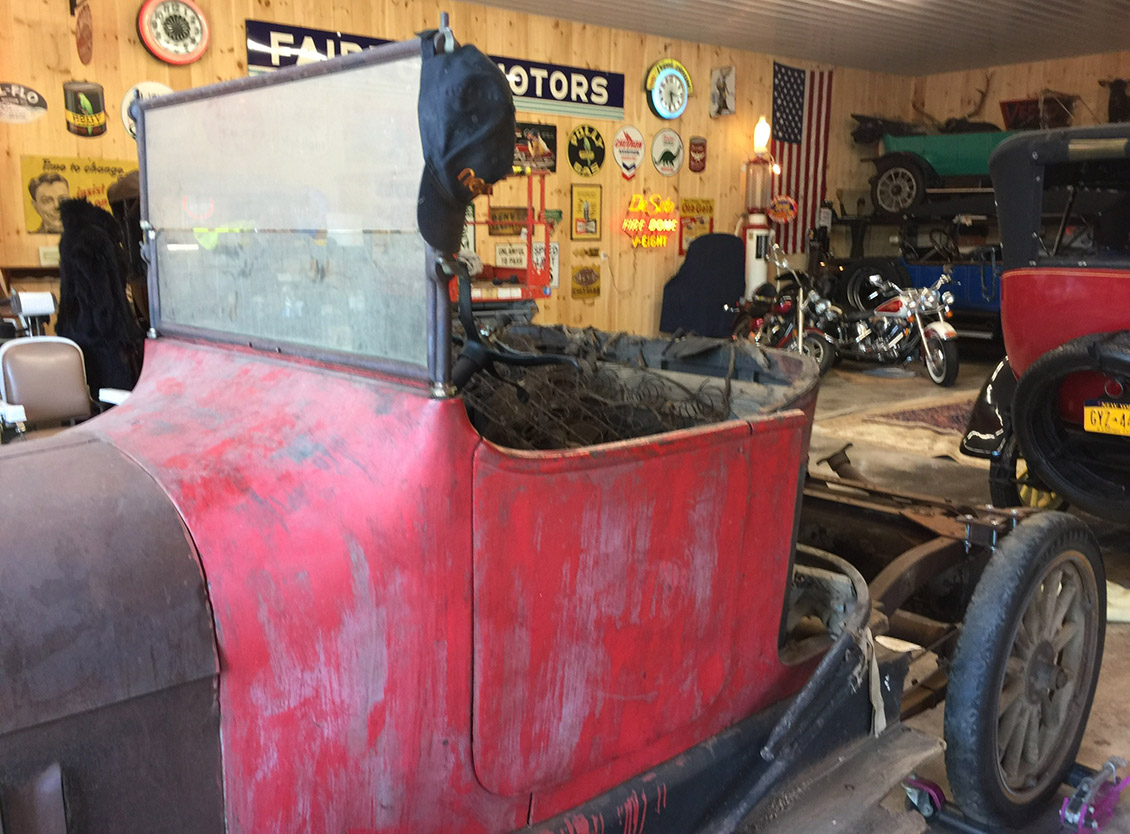

Everyone in the Great Race knows that two-time Great Race champion Howard Sharp loves old cars. The older the better. And over the years he has collected a number of pre-World War I cars that he figured he’d get around to restoring one day. But over the last couple of years he has parted with a few Brad Epple bought a 1916 Chalmers last year and Ted Stahl bought a 1916 Buick the year before that. And now Howard is selling another pre-war car that he believes could be a great rally vehicle in the Great Race one day. It is a 1915 Velie Big Six with a 34 horsepower 6 cylinder engine. It sports 34X4 tires on good wooden spoke wheels. If interested, call Howard at 585-738-1415.
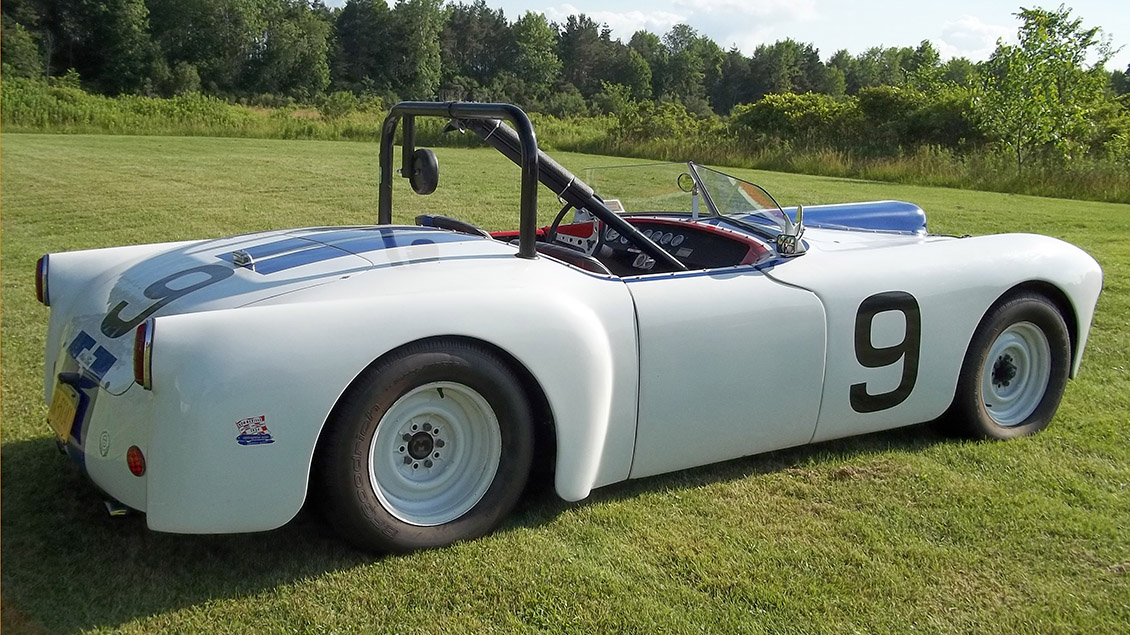
Another great rally car is in Georgia — a 1953 Atlas Ford by Allied Atlas Co. in Los Angeles. It is one of 5 known to exist. It has a 1940 Ford chassis, 1951 Mercury Flathead V8 motor with triple carbs. Just installed new water pumps, two new temperature gauges, custom aluminum radiator. Has 4 speed T10 manual gearbox. Body is one of the early kit car companies in the LA area. Hood scoop is aluminum hand made on an English wheel. Custom made V windscreen and Cunningham style grille. Car resembles Cunningham C2R. Full roll bar, storage in each door and features a fuel cell. Car was raced 7 years in the Northwest before the current owner got it in 2008. He has driven on the road and raced the car at Watkins Glen Vintage Grand Prix in 2008 and again from 2009 to 2015. Car is currently road licensed and he is asking $75,000.00 O.B.O. Call Bob at 716-583-7717 cell or 716-731-9623.